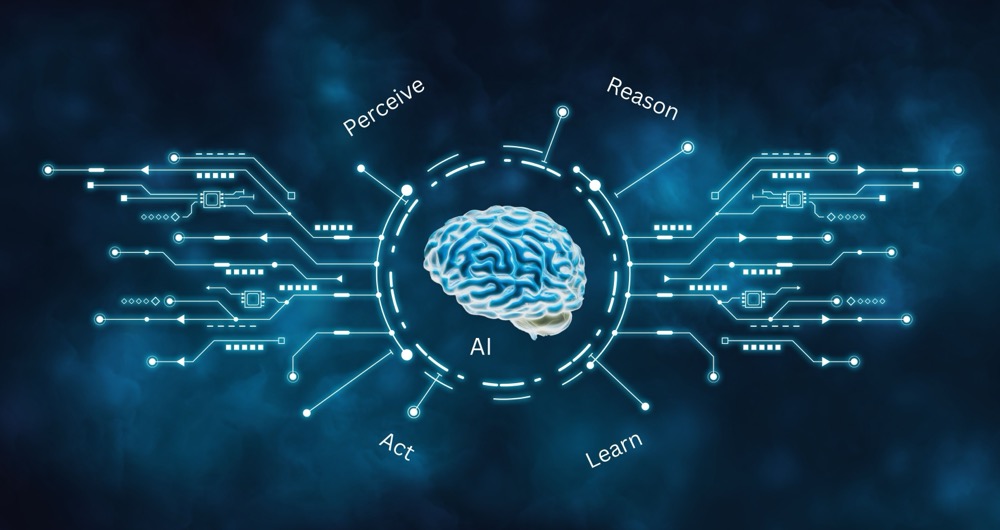
The last few years have brought major advances in AI, and these are changing the way we live, work, and interact. In just the last two years, we’ve seen three generations of AI, and the field continues to advance at a fast pace. What is coming next? Agentic AI, and we’ll see a lot of it in 2025.
What makes this new wave of AI different? It all comes down to autonomy, adaptability, and flexibility. The innovative approach of Agentic AI is focused on these three things. As a result, it can be more autonomous than prior wave AI tools. It can act with greater flexibility based on the context. And it can be more adaptable.
Agentic AI is still in its early stages. But if the past few years of advancement are our guide, soon it will be everywhere. What is it, how does it work, and what is its potential in Contact Centers and for customer service? In this article, I’ll answer these questions as I share what I’ve learned on this subject.
What is Agentic AI?
Since this technology is so new, the exact definition and scope can vary depending on who you ask. But the main concept is an AI tool that can do a task with little to no human intervention. It should be autonomous to some degree and proactive.
What does this mean? That these AI agents can make decisions, learn from experiences, adapt to new situations, and carry out complex, multi-step tasks. As you can imagine, this is a big step forward in AI.
In many ways, Agentic AI acts as a collaborator rather than just a tool. This gives those who use it a real advantage in productivity and bandwidth.
How Does Agentic AI Work?
Those building Agentic AI systems design them to combine three things:
- Reasoning
- Planning
- Dynamic interaction with the environment in which it functions
Of course, it does these in a different way than you or I would. But this is the goal of the design. The result is a tool that can handle more complex, multi-step challenges than other types of AI. For example, a typical AI chatbot can answer a question from a customer. However, an Agentic AI tool can assess the broader context, predict follow-up needs, and guide the conversation toward a resolution.
This capability comes from how Agentic AI processes data. It pulls information from multiple sources, analyzes it to understand patterns or challenges, and then creates and executes strategies to solve problems. It can even learn and improve over time with continuous feedback loops and iterative model training.

How Does Agentic AI Solve Problems?
As I mentioned, the exact definition and scope of Agentic AI can vary depending on who you ask. This means that the steps such a tool takes to solve a problem can also vary. But let’s take a look at one approach that is in use by Nvidia. Others may vary a little from this but are likely to still have much in common with it.
- Perceive: In this first step, the AI gathers data and then processes it. The data can come from a variety of sources, such as databases, customer interactions, and digital tools. It then processes this data to recognize patterns, learn about the environment, and isolate key details.
- Reason: This is the step that gives Agentic AI its ability to think critically. A large language model (LLM) acts as the reasoning engine. It interprets tasks and generates solutions. It may also coordinate or direct specialized models to care for some functions. Then, it develops a plan of action based on the result of this step.
- Act: Now the Agentic AI system uses external systems or tools to execute the plan. It might update a CRM, process a transaction, or care for other tasks. Guardrails are often built in to ensure the AI stays within defined limits.
- Learn: In the last step, an Agentic AI tool can use a feedback loop to learn and improve. By analyzing the outcomes of its actions, it can provide training data to refine its models and strategies.
Of course, other AI tools may also follow these steps to some extent. The difference is that Agentic AI has been designed to do so in an adaptable and autonomous way.
Agentic AI in Customer Service
Now let’s consider how all of this applies to Customer Service teams and in Contact Centers. What are the benefits it might have? What might be the challenges? And what else do we need to consider?
Benefits
- Empowered Agents: Agentic AI may be able to act as a co-pilot for customer service agents. By offering real-time insights, context-aware suggestions, and predictive solutions, it may reduce decision fatigue and help agents to respond quickly and confidently. For example, it could recommend the best resolution path during a conversation, allowing agents to focus on empathy.
- Enhanced Customer Experience (CX): With its ability to analyze data and predict needs, Agentic AI might enable more personal and meaningful customer interactions. Customers may receive help from faster resolutions, fewer handoffs, and a blending of human empathy and AI efficiency.
- Operational Efficiency: Agentic AI might streamline workflows by automating repetitive tasks, such as updating records or routing tickets. It could even be used to handle claims or returns up to a certain amount all on its own. This could allow agents focus on complex or higher value.
Of course, these benefits rely heavily on the quality of the data used to train the model.

Challenges and Considerations
- Cost of Implementation: Integrating Agentic AI can be expensive, especially for mid-sized businesses. Costs may include upgrading infrastructure, licensing software, and providing training for staff. Careful planning and phased implementation can help manage these expenses. And over time, the long-term ROI from time and efficiency savings may balance out the upfront costs. I suggest that you consider the total cost of ownership as part of your planning process.
- Implementation Barriers: Adopting Agentic AI requires investment in technology and integration. You may need to upgrade legacy systems and provide training to ensure agents can use the tools effectively.
- Training and Adoption: Agents might initially struggle with adapting to this new way of working. Proper onboarding and ongoing support are vital to building trust in the technology and maximizing its benefits.
- Ethical and Transparency Concerns: These are a major issue in AI deployment. People are especially worried about bias in AI models, and their personal privacy. So, make sure you are transparent with your customers when AI is used. And in the planning process, think carefully about how to use Agentic AI responsibly and in an ethical way. Pay special attention to try to avoid biased and incorrect outputs.
- Balancing AI and Human Touch: While Agentic AI does improve efficiency, we need to keep the human touch. This builds trust and rapport. Striking the right balance ensures customers feel valued and heard, not just processed.
The Future of Agentic AI in Customer Service
Agentic AI is still in its early stages. However, it has potential to really transform customer service. Here’s a glimpse into what the future might hold:
- More Human-AI Collaboration: The future will likely see deeper integration of Agentic AI as a true partner to customer service agents. By handling repetitive tasks and offering real-time, context-aware guidance, it may free up agents to focus on building meaningful connections with customers. This collaboration could redefine the role of human agents, making their work more impactful and less routine.
- Hyper-Personalization: As Agentic AI matures, its ability to analyze and predict customer behavior might improve, though accuracy may vary depending on the data and context. This may lead to hyper-personalized customer experiences, where interactions are tailored not just to past behavior but to real-time needs and preferences.
- Enhanced Multi-Channel Support: Agentic AI appears ready to make omnichannel customer service truly consistent. Whether a customer reaches out via messaging, chat, email, voice, or video, the AI could provide consistent, informed support and ensuring smooth transitions between channels.
- Proactive Customer Engagement: Future Agentic AI systems may move from reactive to proactive modes. Instead of waiting for customers to contact support, these systems could predict issues—like delayed deliveries or billing errors—and offer solutions before problems arise.
- Continuous Learning and Improvement: As feedback loops become more robust, Agentic AI should grow smarter over time. This self-improvement may make customer service operations increasingly efficient and accurate, reducing errors and ensuring faster resolutions.
While the road ahead comes with challenges, the future of Agentic AI in customer service looks promising. It’s not just about automation—it’s about empowerment, adaptability, and creating better experiences for both customers and agents. Of course, while Agentic AI can enhance your agents’ work, it cannot fully replace human judgment, especially in emotionally charged situations.
Conclusion
As AI advances continue, the innovative technology of Agentic AI has potential. And it is likely to help us out in the world of customer service. It can bring autonomy, adaptability, and decision-making ability to our AI toolkit. This can enable us to tackle complex, multi-step challenges with greater efficiency.
The future of Agentic AI is bright, with its ability to improve how we engage with customers. Yet, as with any new technology, it comes with its share of challenges, including cost, implementation barriers, and the need for ethical transparency. Its success lies in thoughtful adoption—balancing AI-driven efficiency with the human empathy that is still vital.
Stay Ahead with the Latest Insights
Want to stay informed about emerging technologies like Agentic AI and their impact on customer service? Subscribe to the CBA blog for expert insights, actionable tips, and updates on the future of customer experience. Join a community of forward-thinking professionals shaping the next era of innovation.


